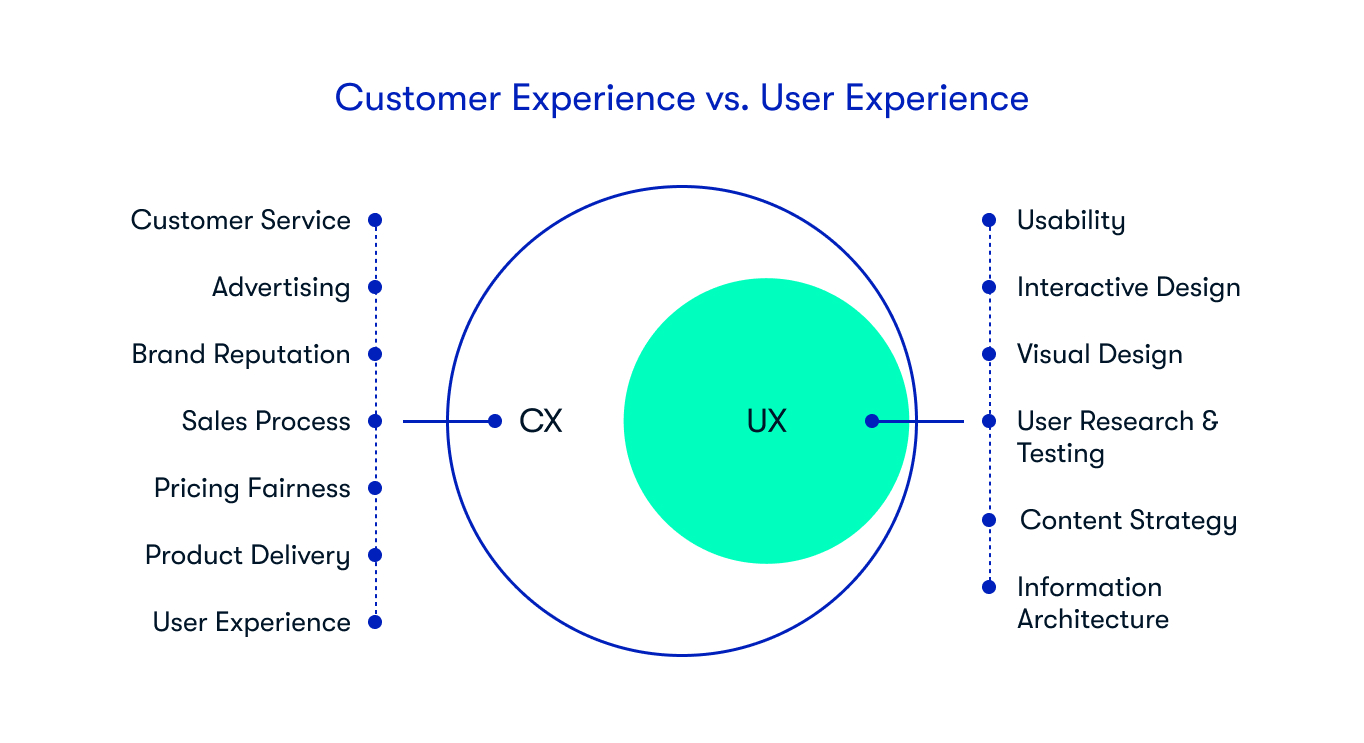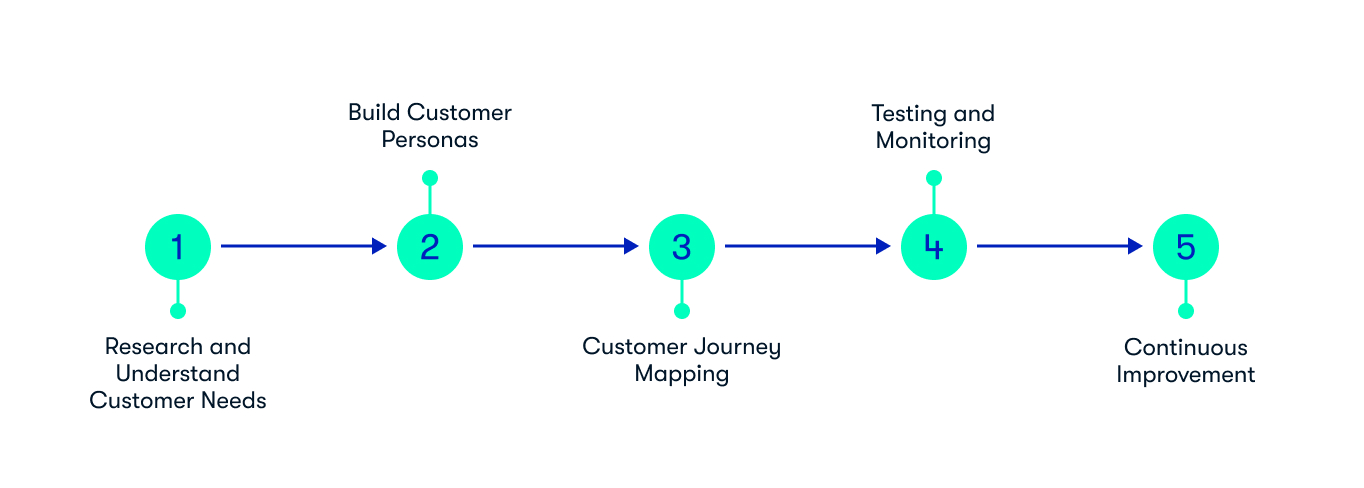Your roadmap to effective customer experience design
With customer expectations on the rise, and with increased competition in a globalised world, designing the customer experience has never been more important. When consumers face numerous choices, they tend to choose brands that offer a personalised experience, making them feel valued throughout their buying journey.
Despite the importance of customer experience design, research suggests it’s an area increasingly being neglected by businesses around the world. According to Forrester, CX design quality dropped in a fifth of businesses in 2022. A similar proportion are planning to scrap their dedicated design teams this year.
It’s no surprise, therefore, that Gartner has found that only 14% of consumers say they’ve had a digital interaction with a brand that has changed their intended action or behaviour.
This means you have an opportunity to stand out from the crowd, go the extra mile and deliver customer experience design that demanding consumers will love.
This post takes a look at the practicalities: what is customer experience design, how it works, how you can benefit from getting it right, and the key pointers around putting it into practice.
What is customer experience design?
Customer experience design is the practice of building positive experiences into a buying journey. This can be at any stage of the customer journey map, including the product’s nature and presentation; digital touchpoints across browsing, ordering, payment and fulfilment, and the ease and speed of the customers’ journey.
Ideally, customer experience design should focus less on what customers do and more on how they feel. The end goal is not just that they have completed a purchase, or taken whatever action it is that you want them to take.
The aim of CX design is to meet customer expectations and ensure they’ve enjoyed the process, trust you as a brand, and feel valued from start to finish.
It’s also important to say that customer experience design is not the same as user experience. Instead, UX design can be considered one part of customer experience design, where the practicalities of how a customer navigates your website or app help support more positive, personalised and stress-free experiences.

Benefits of customer experience design
Gartner has estimated that by 2026, a quarter of people around the world will spend at least an hour a day in the metaverse, whether that’s to work, learn, communicate, shop or be entertained. This is just one place where customer experience design will help brands like yours stand out from a huge number of competitors.
Ultimately, getting customer experience design right can make a huge difference throughout your business, in terms of your profitability and your perception:
 High-quality customer satisfaction
High-quality customer satisfaction
Customers who feel more valued by a brand, and who get individual treatment, will feel much more positive about the whole buying experience. This can enable strong, trusted relationships to be developed between customers and brand.
 Improved customer retention and loyalty
Improved customer retention and loyalty
If a customer is happy with the experiences they’re getting, they’ll want to come back to shop with your brand time and again. This can help build invaluable loyalty at a time when it’s never been easier for customers to shop around and go elsewhere.
 Greater customer advocacy
Greater customer advocacy
When customers get great experiences from a brand that they shop with, they’ll feel empowered to tell their friends, relatives and co-workers about it. This can help you widen your customer base and pick up new customers, who are curious to try these positive experiences for themselves.
 Stronger bottom line
Stronger bottom line
All of the above will help you generate more sales in the short term and in the long term. This means you’ll improve your revenue and profitability, and build a stronger future for your business as a whole.
Tips for Effective Customer Experience Design
Getting customer experience design right requires careful planning and implementation. It’s vital to remember that it isn’t about what you think is right: it’s about what the customer is most likely to respond to positively. To achieve that, these three tips will help you along the way:
Identifying Pain Points and Needs
Everything you do in customer experience design has to be done in the context of the customer’s desires and priorities. If there are any pain points within your buying journey, then this is your one chance to address them and smooth out the bumps in the road to a successful, enjoyable purchase.
It’s for this reason that customer feedback is absolutely critical when planning a customer experience design strategy. Proactively seek out customer feedback and data, and analyse it to work out where the biggest pain points are, so that you can make the right decisions when it comes to addressing them.
Designing High-Quality Customer Interactions
From initial research to payment and delivery, every single customer interaction with your brand, throughout the whole customer journey, should be high quality and consistent with every other interaction.
This consistency builds confidence and reassurance within the customer that they’re dealing with a brand that knows what it’s doing and can be trusted with a customer’s hard-earned money.
For example, if a customer has to leave your site or app to use an external payment function, then this might leave them unsure about proceeding for security reasons. But if your payment gateway is embedded instead, then they can seamlessly and confidently move from one part of the journey to the other without any doubt or uncertainty.
Creating Customer-Centric Products or Services
Both of the above points also apply in ensuring that the products or services you sell meet customer expectations. There’s no point in developing excellent customer experience design if what you’re selling isn’t of interest to your customers anyway.
Because of this, your products and sales lines should always serve the core needs of the people that you want to buy them. Additionally, what customers want will change over time, meaning your offerings will have to evolve to meet new demands.
The Customer Experience Design Process
Every business and customer base is different, so no two customer experience design processes will be the same. However, there are five general principles that will be shared across the vast majority of cases:
1. Research and Understand Customer Needs
As mentioned above, you should always start by gathering the most extensive and detailed insights possible into your current customers and wider target audience.
Conduct market research and digest customer data to discover their pain points, typical behaviours and preferences, and key priorities. This allows you to put all subsequent decisions about customer experience design in the right context.
2. Build Customer Personas
The insights that you’ve gained from the research process can then be used to build customer personas: detailed profiles of hypothetical customers that possess all the attributes that you want to target.
Building several of these can help you personify the audience you want to serve and form the overall objective of the design processes you’ll complete in the following steps.

3. Customer Journey Mapping
Using your personas as a guide, you can go on to create detailed customer journey maps that you’d like individuals to go through from start to finish. This should not only take into account the different touchpoints and digital platforms they’ll use along the way, but also where they will interact with your brand, and how they should feel at each stage of the journey.
You should have different customer journeys for each persona that you’ve created, so experiences can be refined for each type of customer.
4. Testing and Monitoring
With your customer journey maps in place, you can begin to develop the solutions and apps that will help deliver those journeys, building customer experience design into them as you go.
Once you get to the prototype stage, we recommend conducting user experience testing with a selection of real customers, so that you can get the most relevant customer feedback on improvements you need to make. They will also give you valuable insights into whether your proposed solutions are giving them positive experiences and addressing their pain points.
5. Continuous Improvement
As you reach go-live with your solutions, it’s vital to remember that this isn’t the end of the story. Customer needs will change, expectations will evolve, and competitors will continue to innovate, so you will need to make enhancements on a constant, ongoing basis.
Customer feedback and data insights should be your guide for driving these: it’s best to try and maintain a feedback loop so that customers are giving you regular dialogue on their experiences and what you can do to adapt.
If you feel you need help with any of these steps or advice on what great customer experience design should look like for your brand, then Ciklum is here to help. Our expert global workforce of more than 4,000 developers and CX design gurus can not only point you in the right direction with your strategy but also help you implement it, too. Get in touch to find out more.
You may also like
Subscribe to receive our exclusive newsletter with the latest news and trends
Subscribe to receive our exclusive newsletter with the latest news and trends
Want to reach out directly to us?
hello@ciklum.com
© Ciklum 2002-2023. All rights reserved


